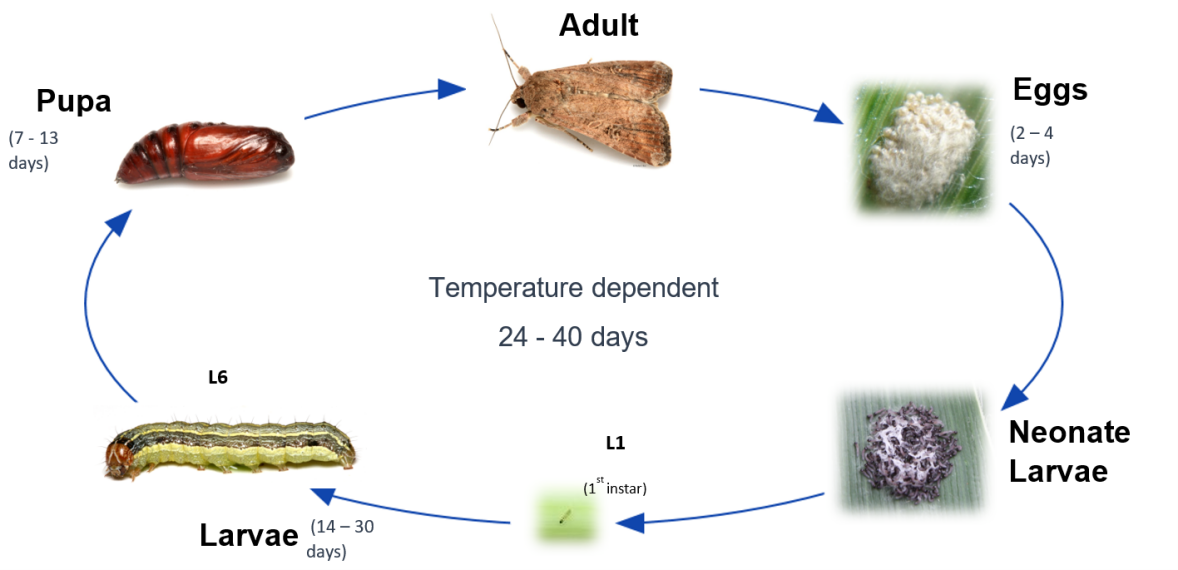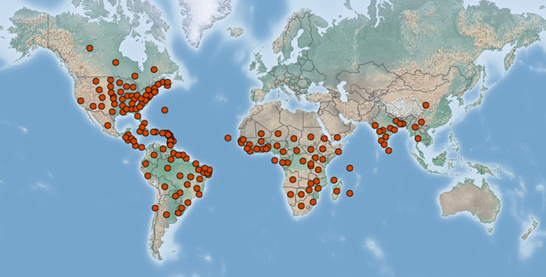Discovered and named by scientists in 1797, the fall armyworm is an insect of the genus Lepidoptera, family Noctuidae, Spodoptera Herrich-Schaeffer and is listed by the Food and Agriculture Organization of the United Nations as one of the top ten global warning pests. It is a fully metamorphic insect, completing one generation in four stages: egg, larva, pupa and adult.


Why be on the lookout for the fall armyworm?
Native to tropical and subtropical regions of the Americas, fall armyworm first appeared in West and Central Africa in 2016, spread to India & South and Southeast Asian countries in 2018, and was introduced to China in January 2019

The adult fall armyworm can migrate long distances with the help of the wind at heights of several hundred metres, flying up to 100 km per night; the larvae are the main stage of damage and can feed on over 76 families and 350 species of plants in their native range, especially maize, rice, cotton, peanuts, sorghum and vegetables, and can eat up a field of maize in a day, nicknamed the "marching moth". "Each female moth can lay around 1,500 eggs in her lifetime, with a maximum of 2,000 eggs, and this biological characteristic of being "excellent flying ability, eating a lot of food and strong reproductive ability." makes it extremely harmful to crops.
Can I still eat maize that has been damaged by fall armyworm?
Fall armyworm mainly affect maize. At the seedling stage, the moth larvae prefer to huddle in the heart of the plant and chew on the leaves as they grow, resulting in uneven leaf growth; when the maize ears are emerging, the larvae gather on the incomplete male ears, which are wrapped by the top two leaves, providing a good hiding environment for the larvae. After the male spike has emerged and dispersed its pollen, the larvae lose their hiding environment and move on; after the female spike has exhaled, the larvae infest the filaments, breaking some or all of them and entering the tip of the spike with the filament channel to feed on the seeds, or directly through the bracts to feed on the seeds.
Usually the ears are no longer eaten by humans after they have been damaged by fall armyworm. Although they do not directly affect the safety of maize for consumption, however, the damage can lead to maize being more susceptible to mould damage and the production of toxins such as aflatoxin.

What are the methods used to control fall armyworm?
The main methods used worldwide to control fall armyworm include monitoring and early warning, agricultural control, physical and chemical lure control, biological control and chemical control.
Monitoring and early warning
We use high altitude lights, frequency vibrating insecticidal lamps and sex pheromone traps to monitor adult moth populations in real time and to make forecasts.

Agricultural control
Agricultural control focuses on cultivation management, crop layout and species resistance to create an ecological environment that is not conducive to the occurrence and infestation of the moth with more emphasis on early prevention.
Chemical control Chemical pesticides are the main method and emergency means to control fall armyworm outbreaks in the short term. Use kenvos Radi plus to control the moth, paying attention to the alternate, rotating and safe use of agents to delay the emergence of resistance and improve the effectiveness of prevention and control. |